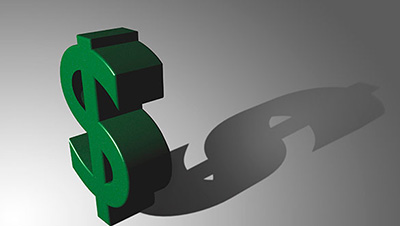Saving: it’s such an abstract concept. The purpose is to salt away dollars, dollars which could be used to buy something shiny and new today, for some unknown event in the future - maybe six months from now, maybe thirty years from now. Perhaps that’s why Americans have struggled with the concept so mightily in the past. It’s hard to live on less when the reasons for doing so are less than clear. But we’ve all been chastened by the latest economic meltdown. Layoffs can happen to us. Our homes no longer automatically go up in value every year. Gas can top $4 per gallon. So, as a nation, we’re starting to save. But adopting any new habit can be difficult. Getting yourself organized to save is a critical component to sticking to your money diet. Without a plan, you won’t get too far. In that spirit, here are a few tips to help you stay the course.

1. Set It And Forget It
A first step to saving diligently is to set up an automatic savings account that sweeps some amount, whether from your direct deposit paycheck or your checking account, into a savings account on a regular basis (e.g. once a week, twice a month). It doesn’t have to be a huge amount, even saving $40 a month adds up quickly over time.
2. Make Your Cash Savings Untouchable
The danger of having a savings account that is attached to your checking account is that it’s too easy to switch those savings into your checking account, or worse access the funds via ATM. If you have a weak moment, and you almost certainly will, your savings will be at risk. Instead, set up a virtual savings account with a bank like ING. It’s easy to set up the account, but it takes a few days to transfer the money out of the account, and there are no ATMs. So once your money is in, it is generally out of reach.
3. Apply the 30 Day Rule
Anytime you’re thinking of making an unnecessary purchase, wait thirty days before pulling the trigger. Chances are in the thirty day cooling off period, you’ll forget about the purchase you so desperately wanted to make in the moment, saving yourself money. If you did purchase an unnecessary item without thinking, return it to the store the following day and then wait it out.
4. Don’t Spend Your Loose Change
Loose change can quickly add up. Start a coin jar, and make it a big one. Tell everyone in the family to put any change they get during the course of a day right into the jar. Over the course of the year, you may have saved a few hundred dollars – enough to make a real dent in necessary shopping without having to rely on credit cards.
5. Make a List, Check it Twice
It’s easy to go overboard when you go grocery shopping unless you have a list. Seriously, do you really need the orange mandarin fizzy water, the Mint Milanos, and the extra boxes of fun cereal? From now on, make a shopping list and stick to it when you’re in the store. You’ll not only save on unnecessary purchases, but you’ll get in and out faster too.
6. Make Loyalty Pay
Even if you rarely shop at that place, having a rewards card for that place will eventually net you some coupons and discounts. Create an email address just for these mailings, collect every card you can, and then check that account for extra coupons whenever you’re ready to shop.
7. Get a Savings Buddy
Having a weight loss buddy can spell the difference between success and failure, so why should saving money be any different? There will be times when you don’t necessarily feel like sticking to the savings diet, and in those moments of weakness, having a friend to turn to makes you more likely to talk through the issue productively than fall off the wagon.
8. Plan for Failure
Nobody is perfect. Recognizing that fact and planning ahead for the inevitable slip-up will almost certainly increase your chances of keeping your savings plan over the long-term. Make a ‘dust yourself off’ plan. List one or two small actions you can take immediately to get yourself back on the savings track.
9. Connect with Friends
Rather than going out to meet up with good friends, have them over instead. Almost every activity you can do at home is less expensive than going out. Have a pot luck, enjoy some drinks, play some card games, or watch a movie. Others are likely to return the favor in the near future as well.
10. Hide Your Credit Cards
The simple act of eliminating credit cards from your wallet can be a powerful deterrent to spending unnecessarily. You can freeze your credit cards in a block of ice, hide them in a closet, give them to another person such as your spouse for safekeeping, or store them in a safe. Whatever method keeps them out of your wallet, and out of stores is bound to help you stick to your budget.










